I’m always fascinated by stories from French history where someone rises from a remote city or tiny village in the deepest heart of the country to international fame. We’ve seen several such stories in earlier post on this blog: Blaise Pascal doing his famous experiments at the top of the Puy-de-Dome, the nobles of the House of Bourbon rising out of Montlucon to create a royal dynasty that still exists in Europe today, or the Marquis de Lafayette leaving his rustic home in the Auvergne to play a major role in the American Revolution.
But it’s almost as interesting to find someone born in the big cities who abandons the bright lights to seek calm in the wild mountains and dense forests of central France. Our visit to Gargilesse-Dampiere (before the pandemic began*) led to us to just such a story…
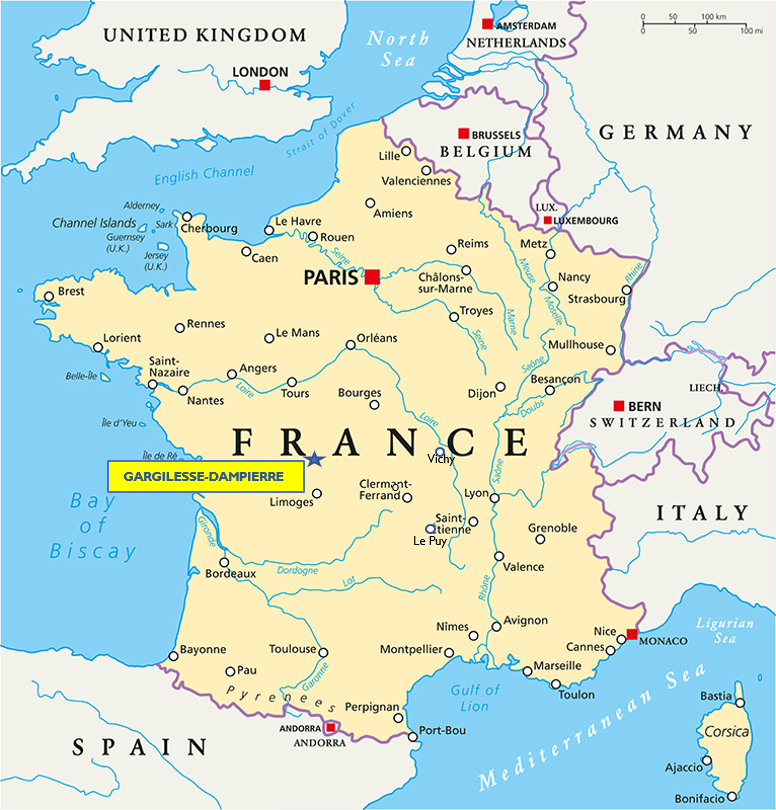
*I know that not everyone can go to France right now. And with Covid-19 infections spiking again this winter, even people already in France may not be able to travel freely. This post, then, is for anyone already in France looking for someplace “off the beaten path” for a “local” vacation – and for anyone else who holds out hope for travel like this when the world returns to a more normal situation. As always, though, it’s best to check before you go to be sure places mentioned here are open and welcoming visitors.
Gargilesse-Dampiere : One of France’s “Most Beautiful Villages”
The little town is on the official list of “plus beaux villages de France” – and, as is the case with several others, you have to make some effort to get there. The entrance to the town is a one-lane bridge, an hour and 10 minutes north of the great porcelain artists of Limoges. I had read somewhere that Gargilesse-Dampierre has historically been “one of the main stops on the famous Chemin de Compostelle (“The Way of St. John”), although with around 300 inhabitants and few commercial shops there’s not much to support a long-term stay here. (There are a few gites with rooms to rent, and some art galleries that signal the town’s appeal to tourists, but not much else.)
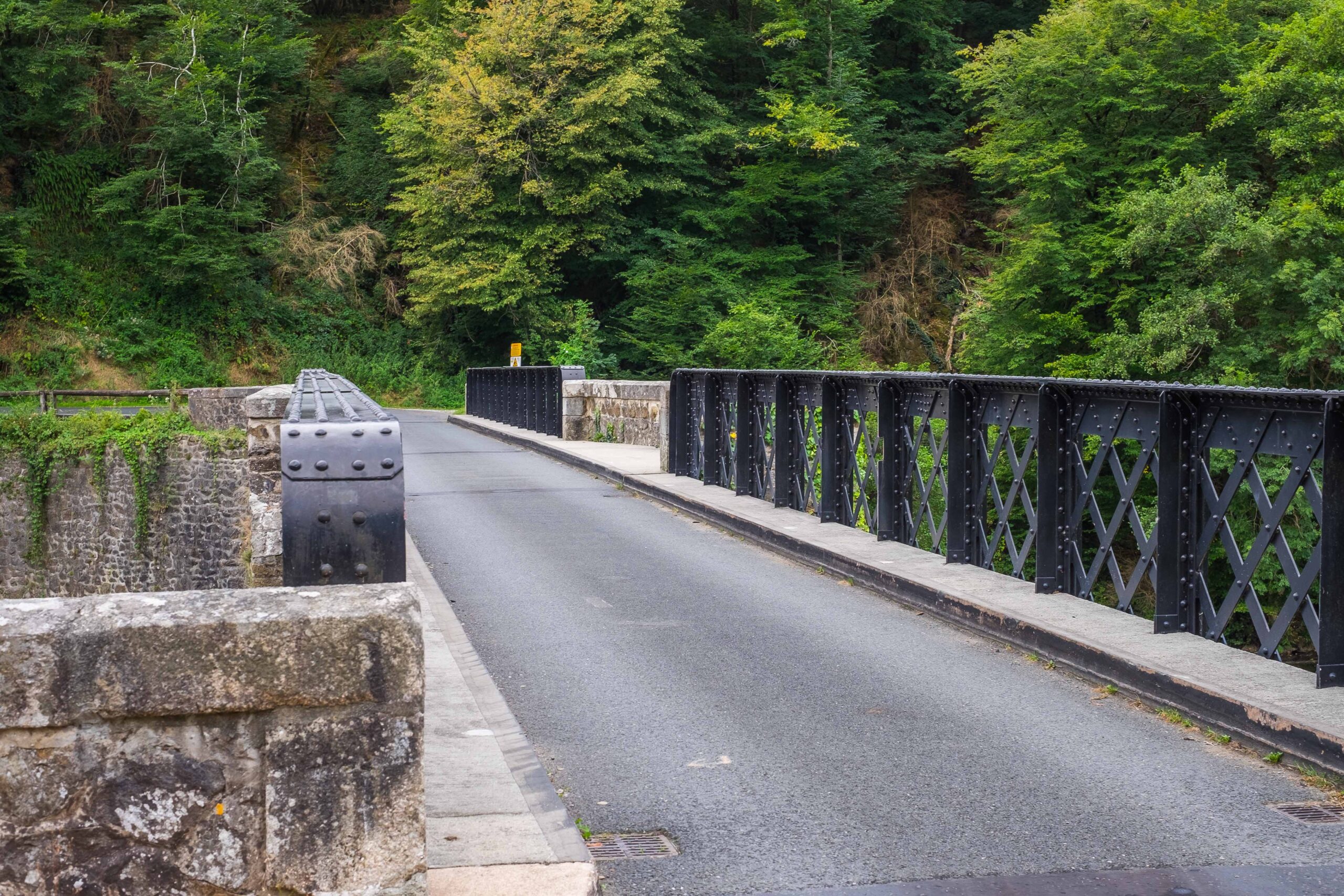
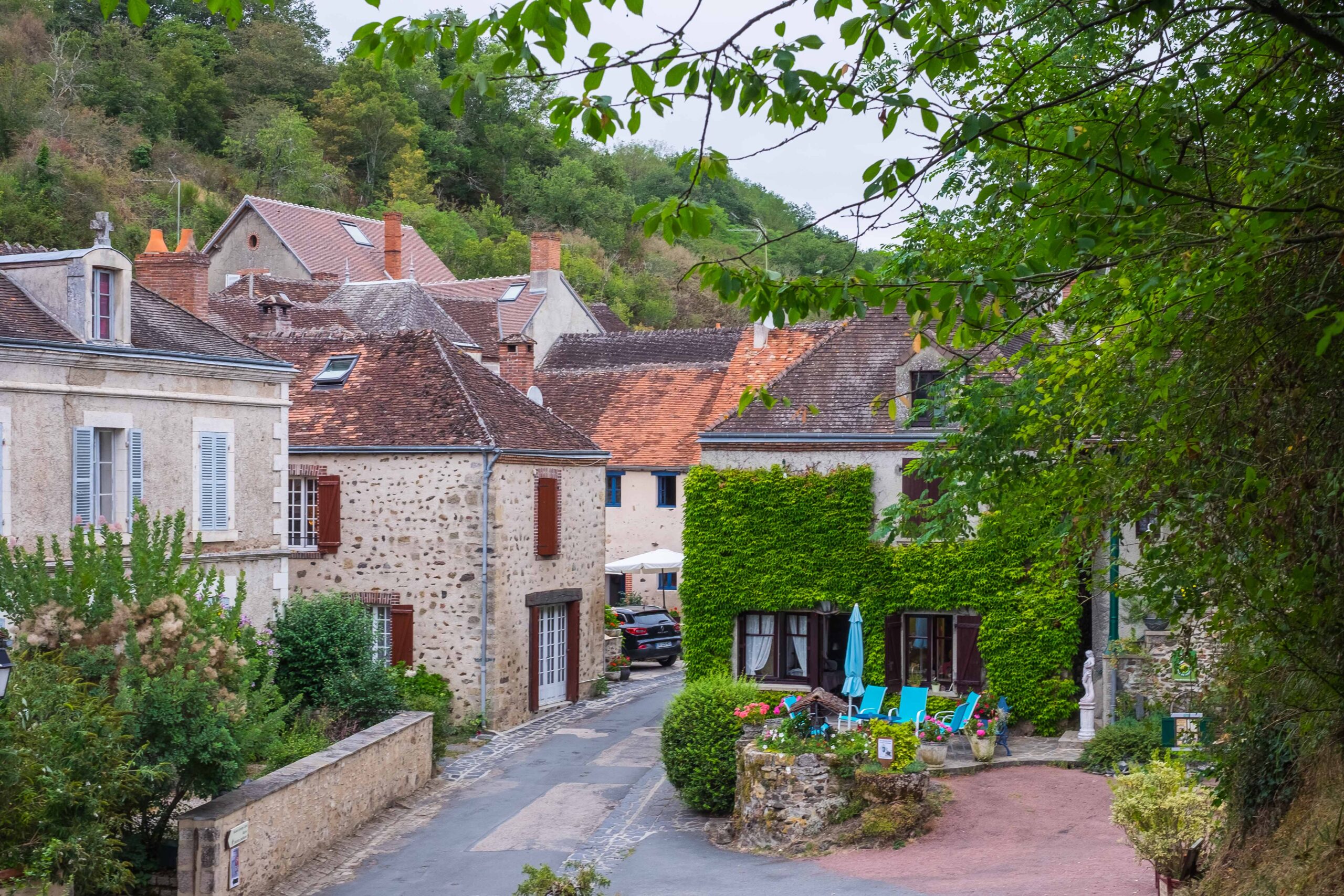
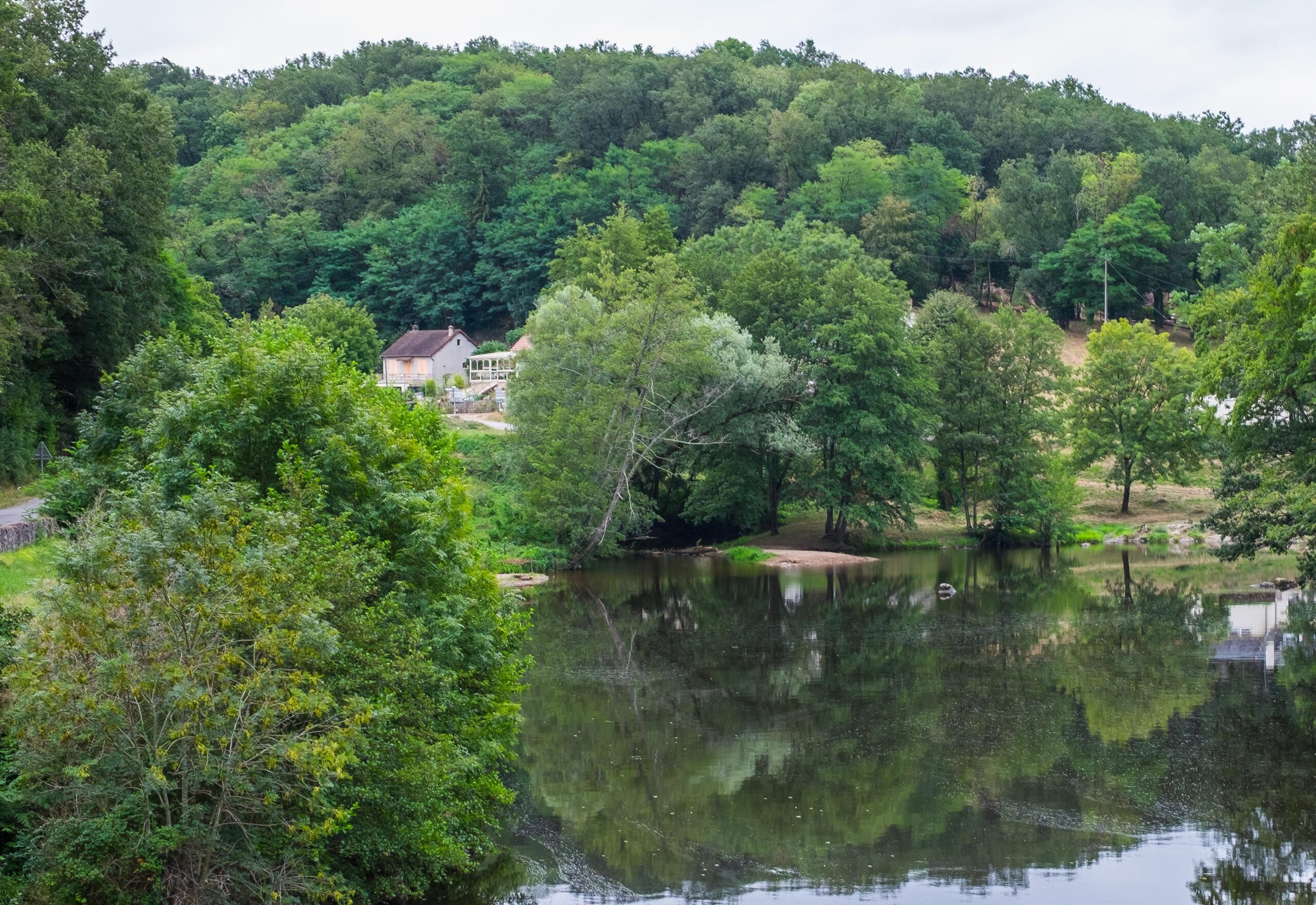
It is a lovely setting, though. Surrounded by an impressive canopy of trees and tucked into a bend of the Gargilesse River, the town is layered against the side of a hill. It’s actually the union of two neighboring villages, joined administratively in 1823. (For simplicity’s sake, I’ll call it just “Gargilesse” here, but the hyphenated name was made official in 1947.) To become a “most beautiful village”, a town must have (among other qualities) at least two significant historical buildings. For a place this small, Gargilesse surprisingly has three:
One of these, the little Church of Saint-Laurent-et-Notre-Dame in the center of town, is for me the most spectacular reason to visit Gargilesse. Built sometime in the late 1100s C.E., the église was originally integrated into the castle of the ruling family, the de Naillacs. That castle was destroyed by a royal army in 1650, leaving only this building which now serves as the parish church.
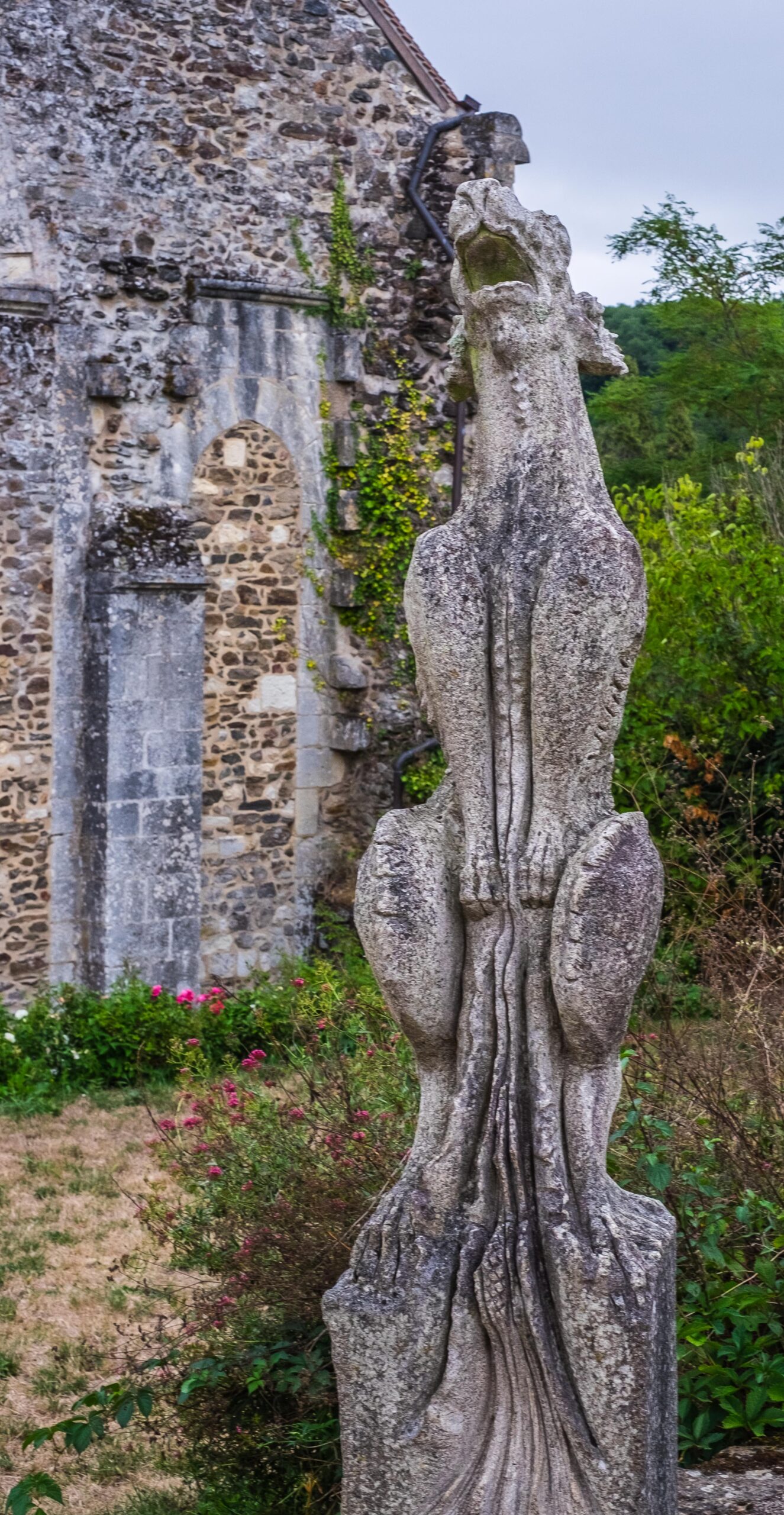
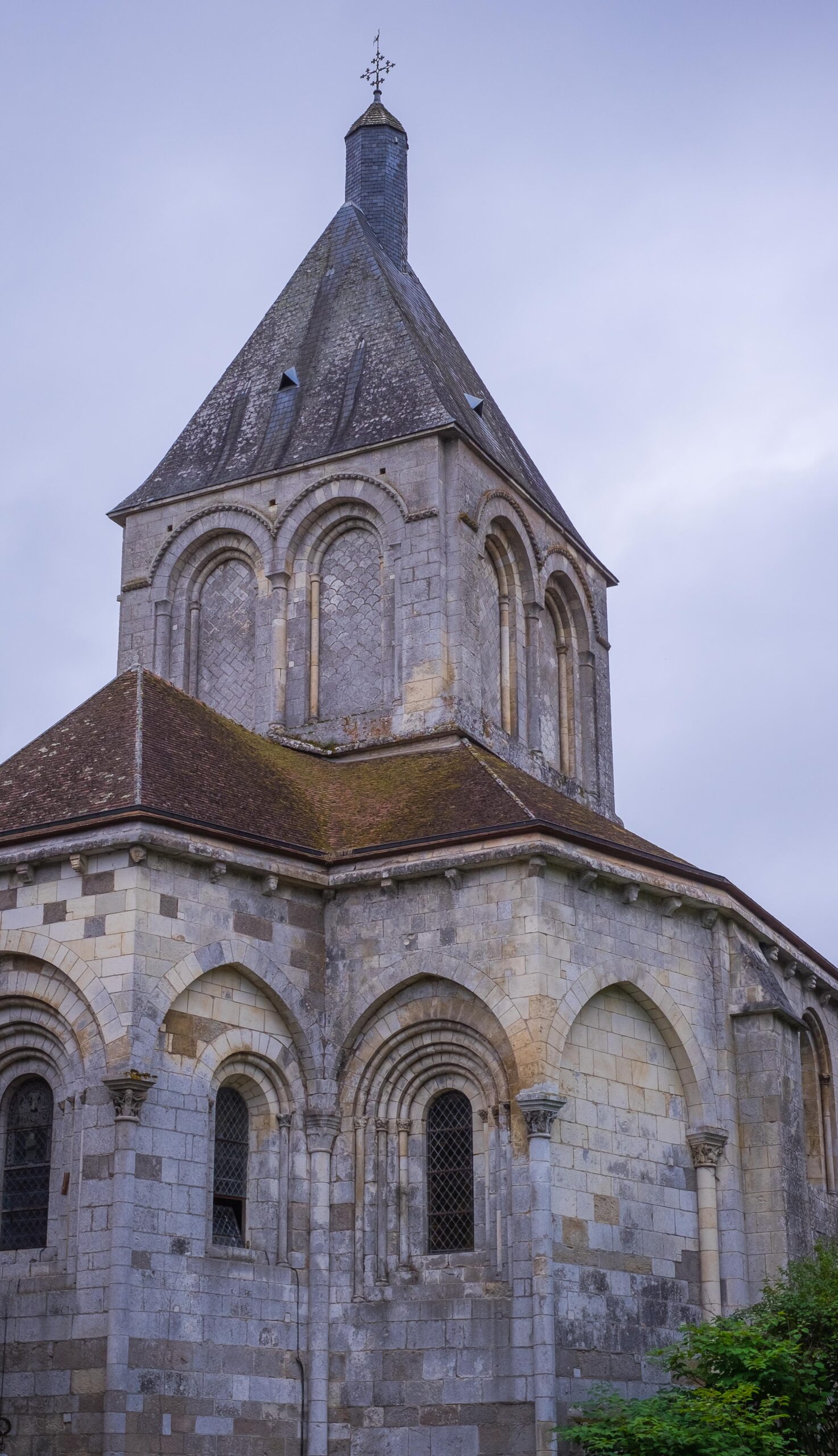
But it’s unlike any other church this size I’ve ever seen in two ways: its walls are decorated with vivid fresco paintings of scenes from the Bible, and the church displays a statue of the Madonna and Child brought back here from Constantinople during the Crusades.
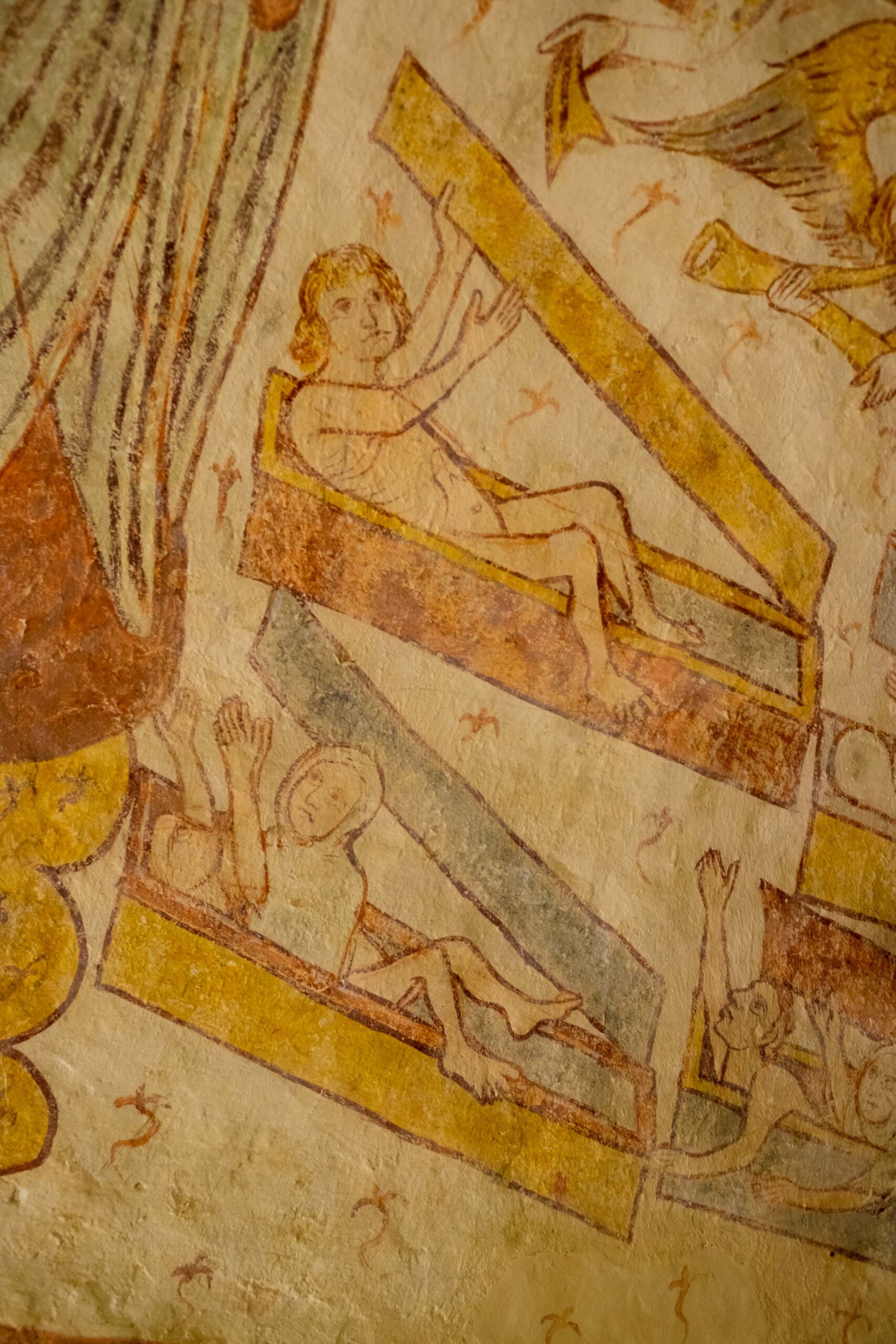
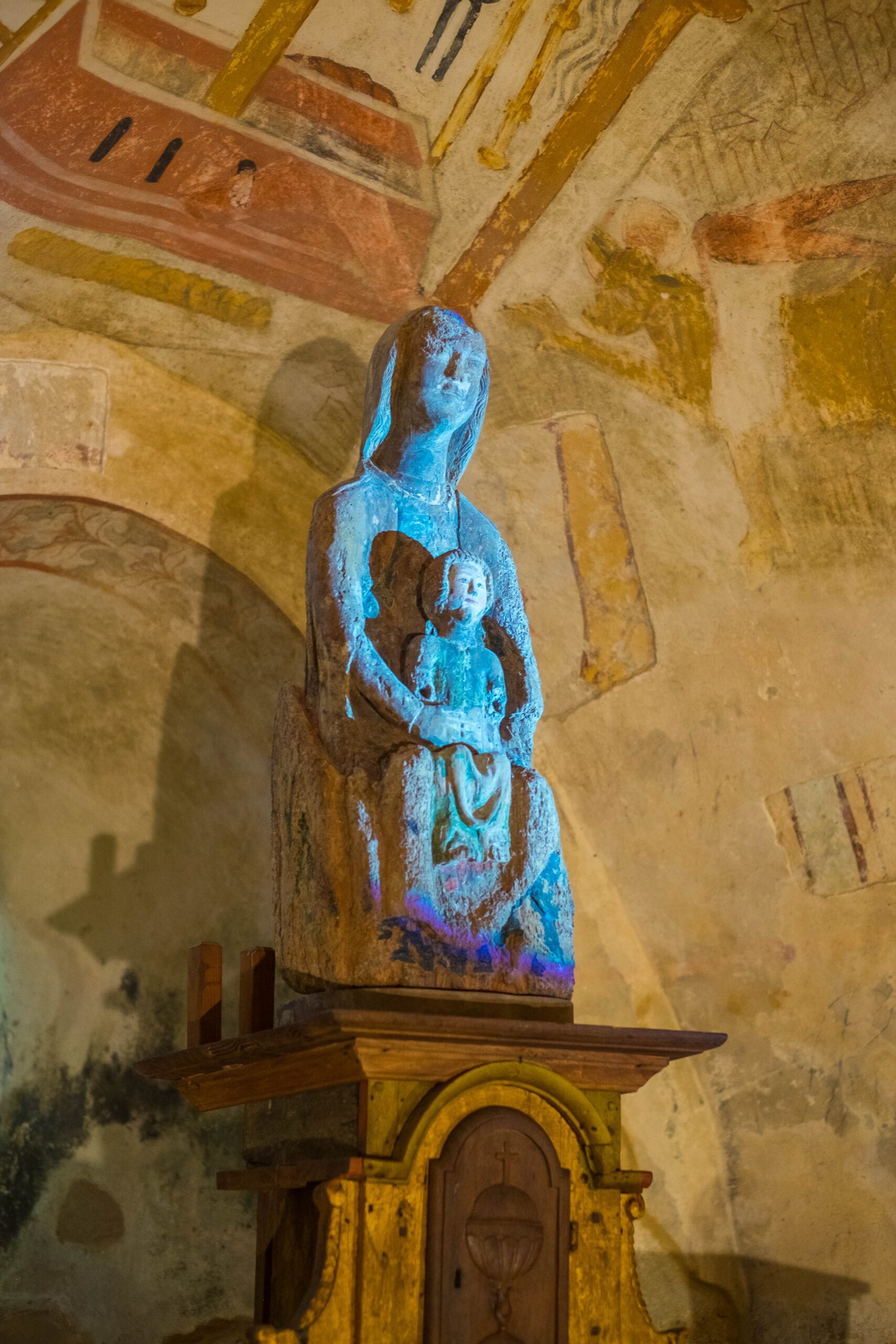
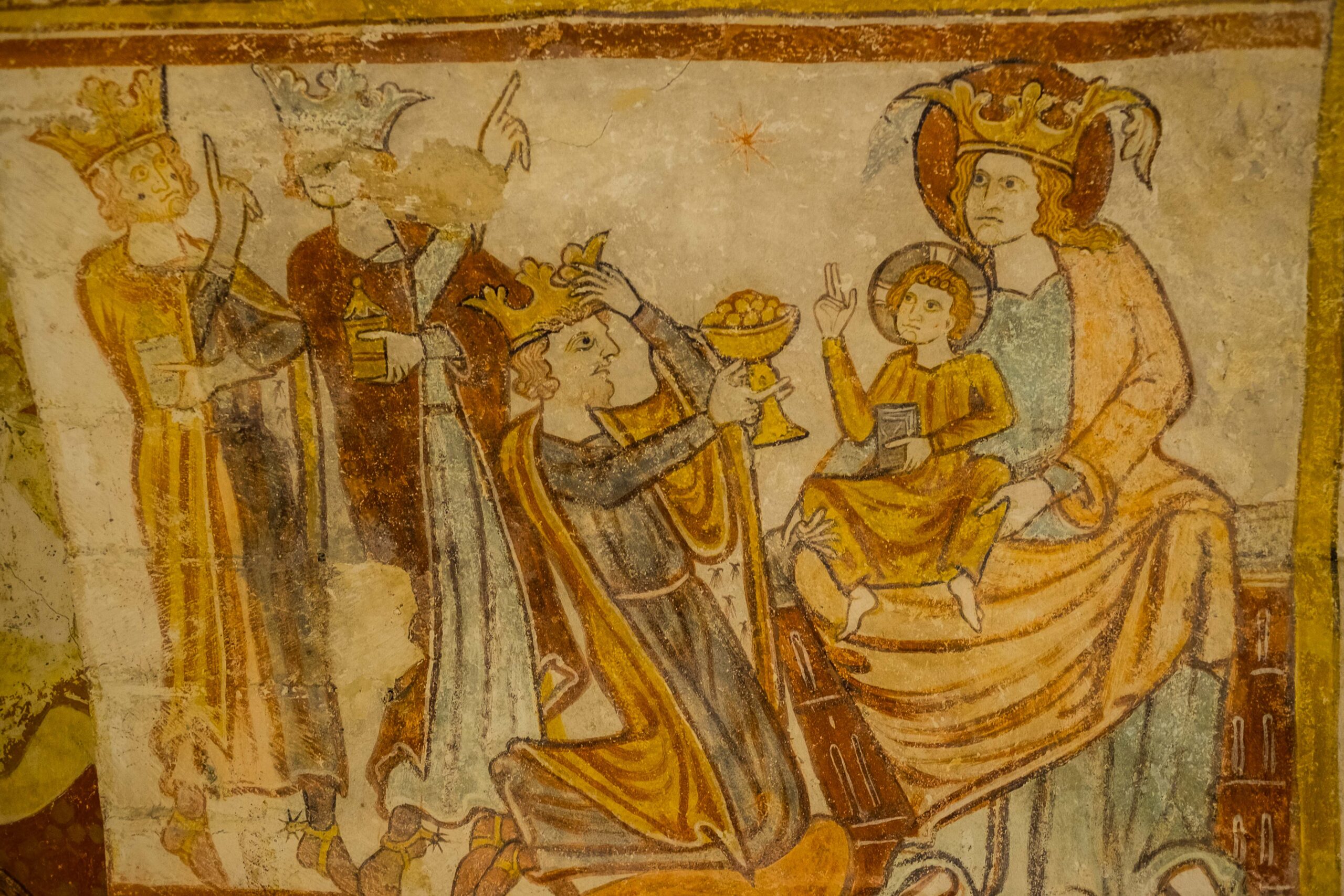
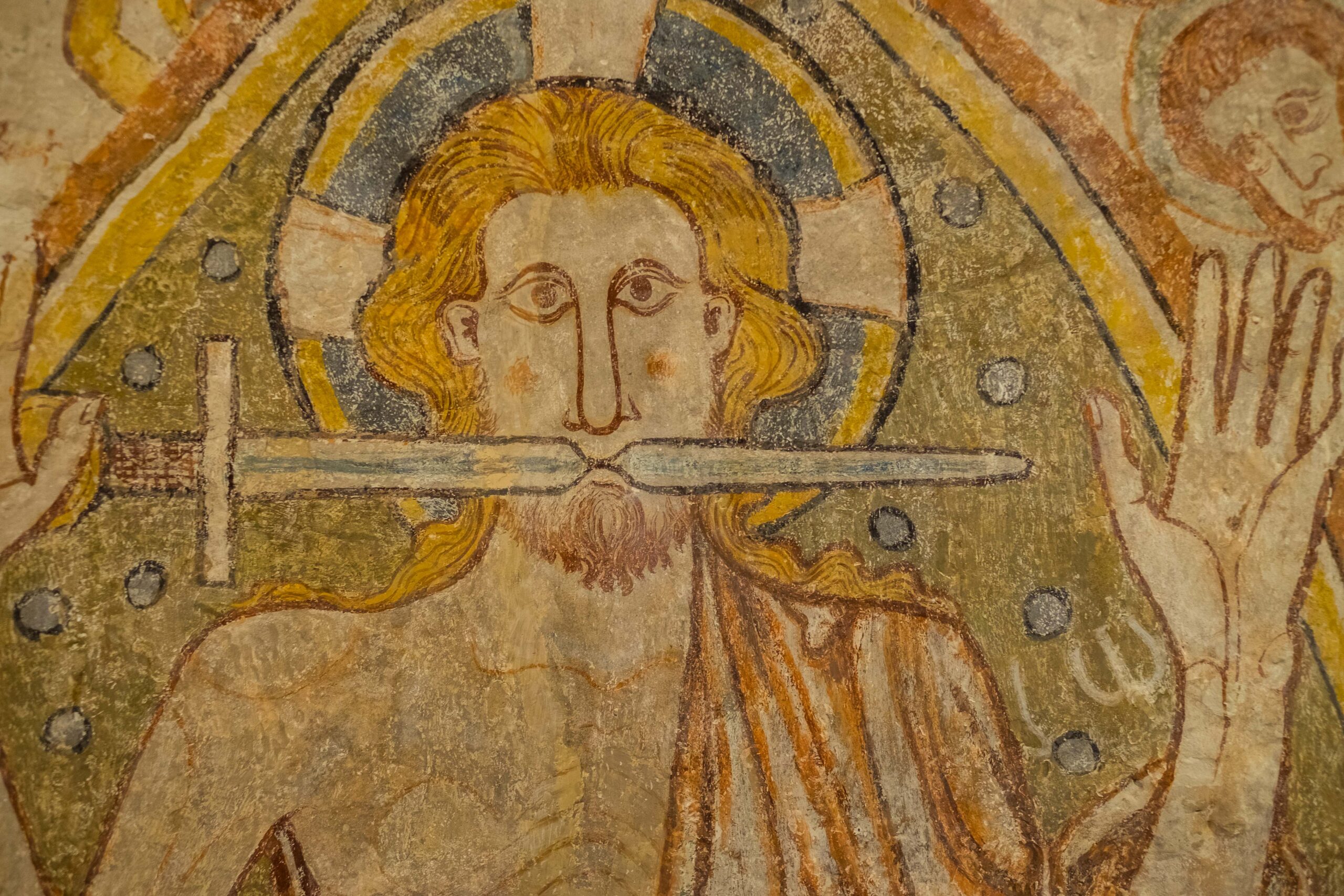
I especially liked spending time down in the ancient crypt, trying to imagine the mindset of the painters of these images over a period of 300 years or so, and trying to imagine the reactions of parishioners as they squirmed under the gaze of the ethereal medieval faces and reflected on the stories they had to tell.
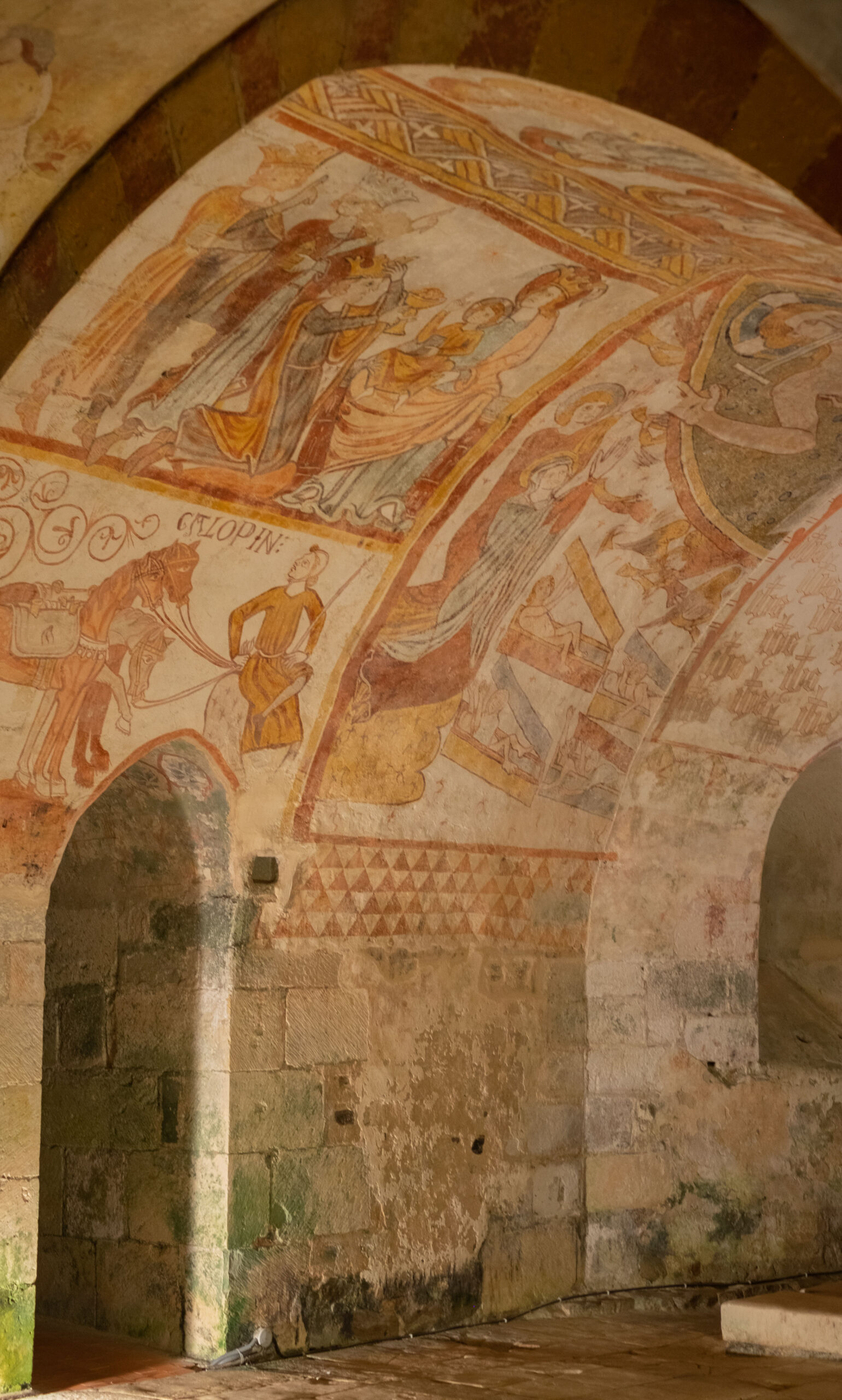
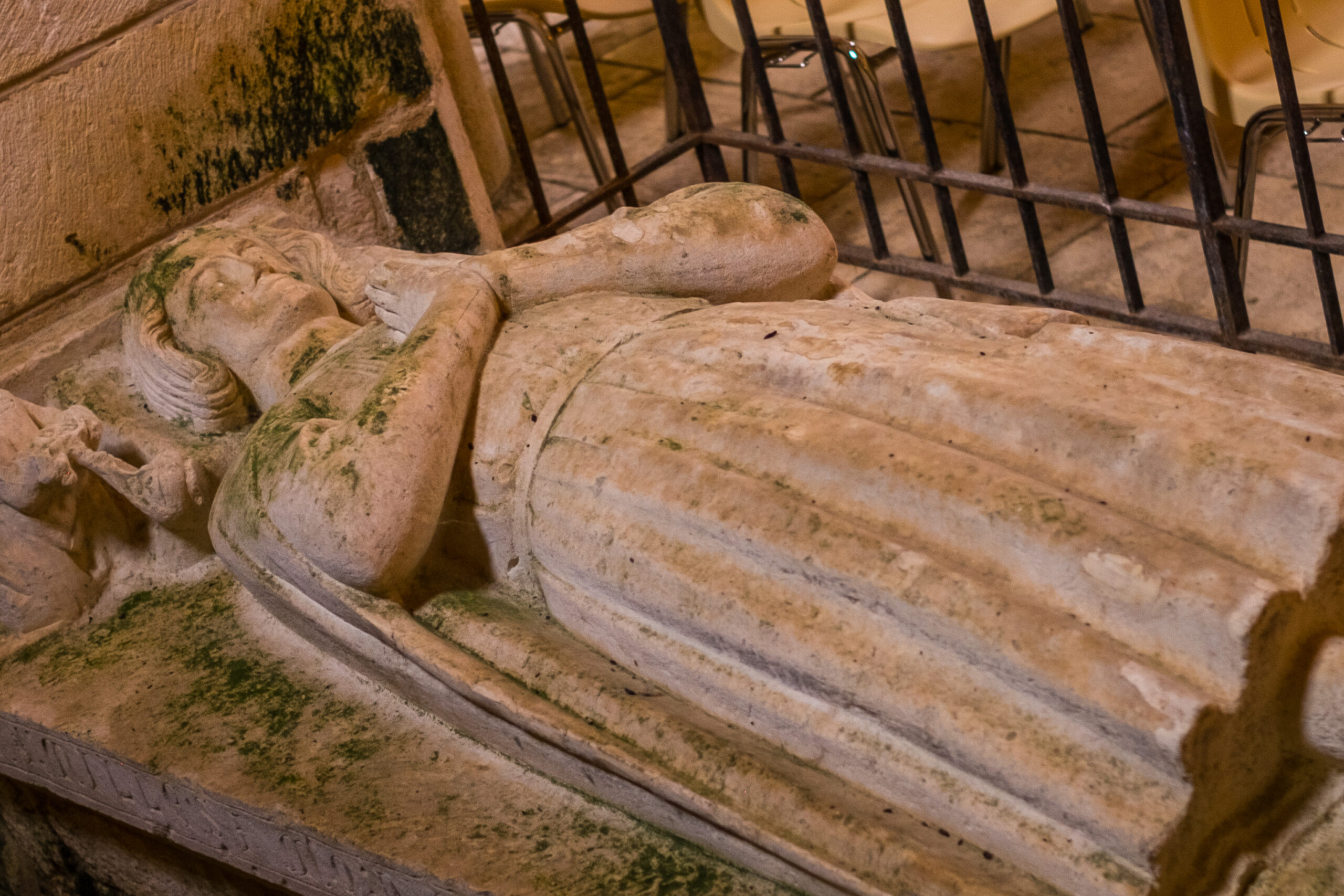
A risqué history…in a church?
The church also houses a remarkably detailed and well-preserved tomb – that of Guillaume de Naillac, a knight in the era of the Crusades and son of the ruling family of Gargilesse during the 13th century. A sleeping dog rests at Guillaume’s feet; his hands are in a prayerful gesture, but his sword is close at hand. But before this elegant example of medieval sculpture was put here 800 years ago, there was apparently a different statue with a more earthy meaning.
People said it represented a spurious saint named Greluchon, with mystical powers that could give fertility to barren women. That led to visitations by women desperate to have children, and they are said to have “performed rites” on the statuary that are best left to the reader’s imagination(!) as a way to “stimulate” their reproductive systems. Today, people still leave coins on the tomb at Guillaume’s feet, but over the centuries the community has managed to reinforce the story of Guillaume and erase the lurid history of Geluchon.
The second historical building in Gargilesse is the “new” chateau, built on the site of the destroyed castle beginning in 1750. It was commissioned by the wife of Louis Charles du Bost du Breuil Olympe de Chevigny (apparently the names of noble families during this period were sold by the kilogram!), and today used as a hall for art exhibitions and local festivities.
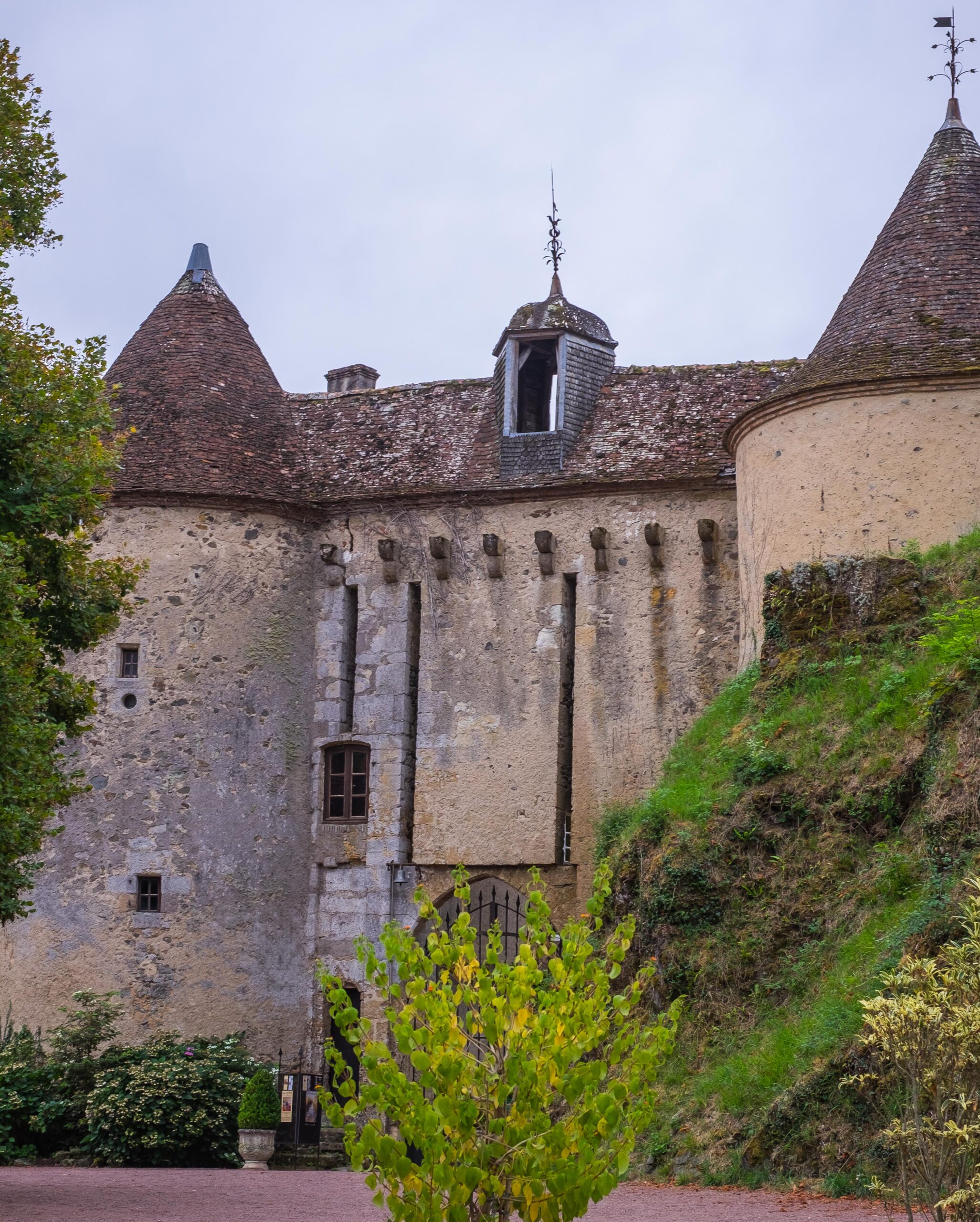
When France’s most popular novelist came to Gargilesse
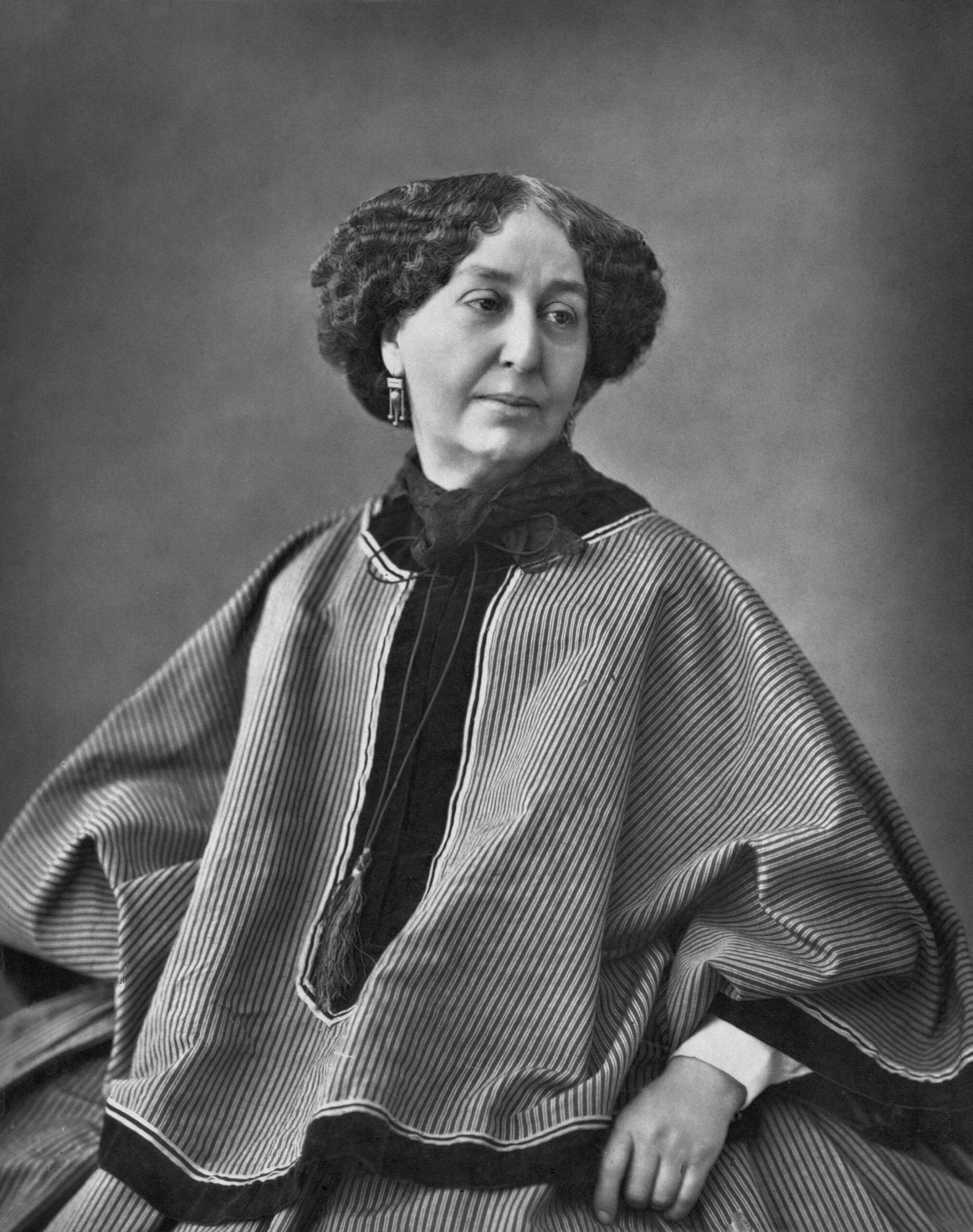
But the third historical building – the house where George Sand came to live – is perhaps the main reason people come to Gargilesse today. It’s hard to believe, but during the 1830s and 1840s she was reputedly more popular in Europe than Hugo and Balzac. Her real name was Amantine Lucile Aurore Dupin – people close to her called her “Aurore” rather than “George” – and she was born in Paris in 1804.
She must have been an amazing character. She wore men’s clothes at a time when women were required to get a “license” if they wanted to do that (Sand never bothered to get the permit). She smoked in public; she famously had affairs with a succession of writers, poets, actors, and politicians, even though she was married to Casmir Dudevant until 1835. Sand lived with the composer Frederic Chopin for a while and based a character in one of her novels on him. She developed a friendship by correspondence with Flaubert, and apparently had a romantic relationship with another woman in her later years.
But in 1857 she was touring this part of France when she wandered into Gargilesse on a walk with her lover and sometime secretary, Alexander Manceau. They immediately felt attached to these surroundings, and Manceau bought a little house down the hill from the town center and set about making it habitable; they named the place Algira (for a beautiful gray African butterfly they had seen during their walks), and lived here for five years until they moved back up the road to Nohant.
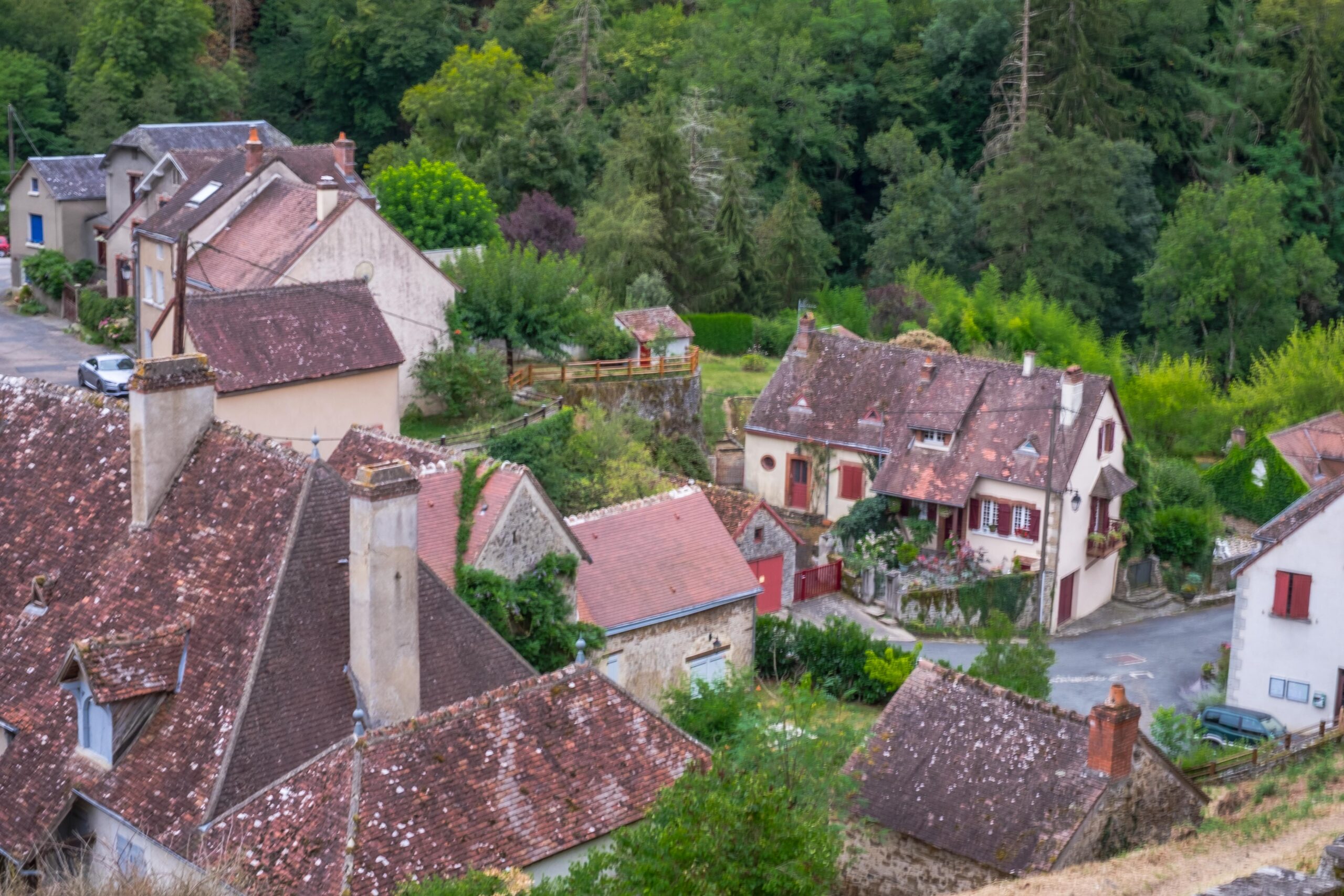
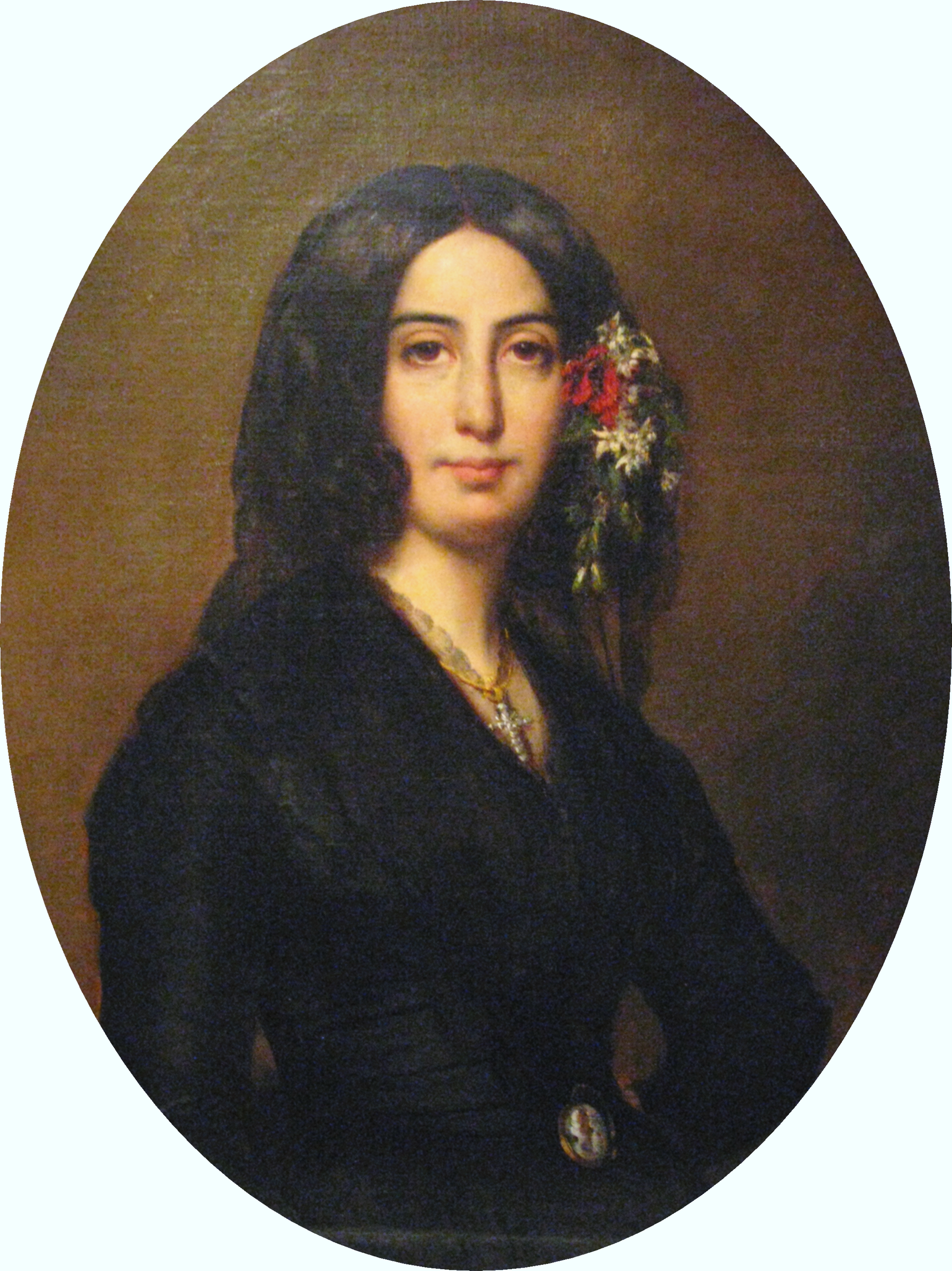
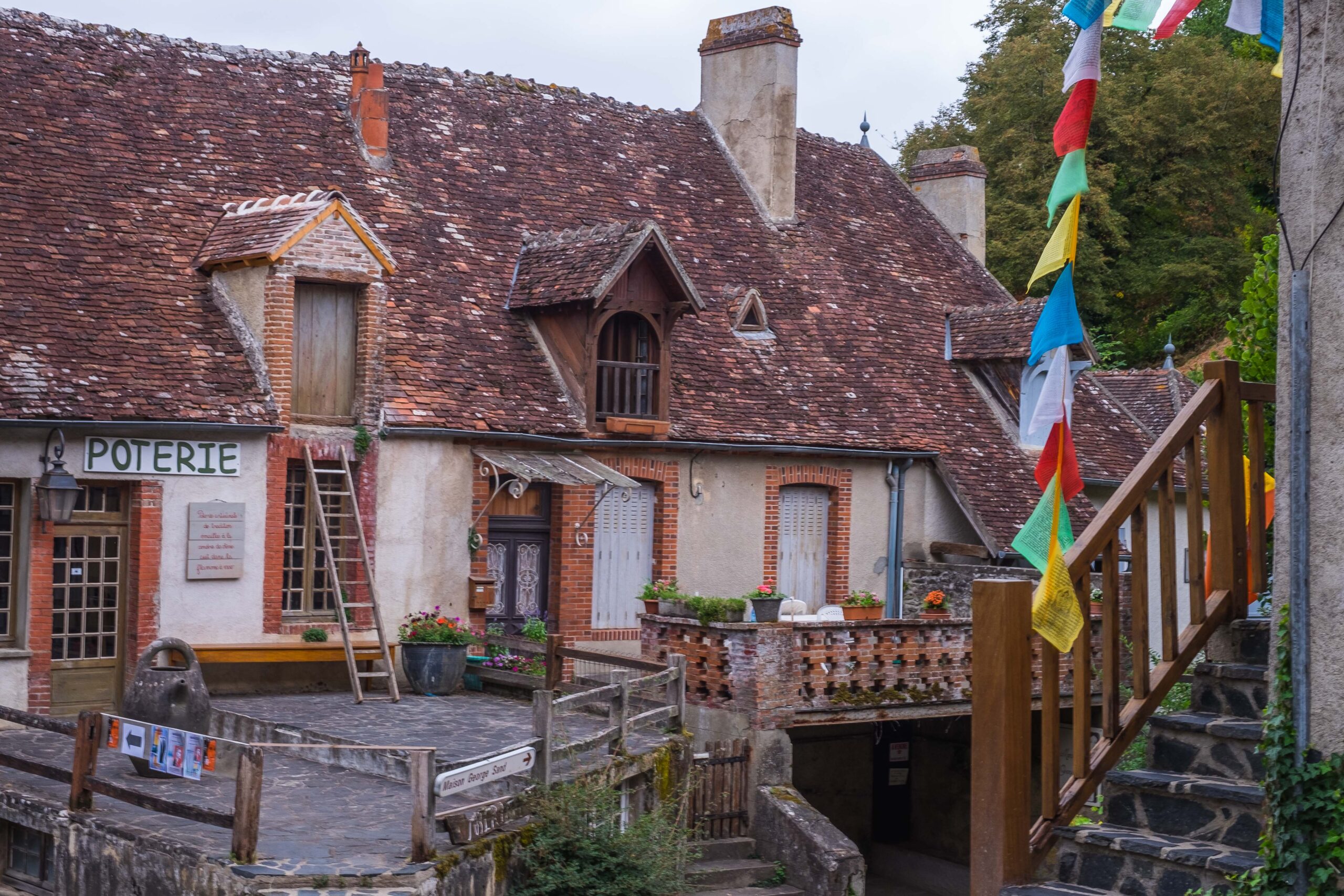
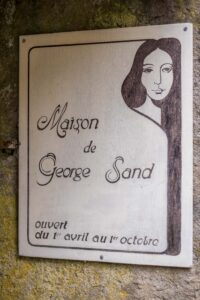
« Forget Mont Blanc » - Gargilesse is better!?
Sand wrote often and voluminously about her experiences in the Berry region. She had seen something of the broader world by this time, having experienced Paris (where she was born), Mallorca (with Chopin), Spain, and Switzerland, so she knew that this corner of central France was not as physically impressive as some other places. Still, she frequently came back to her deep feelings for the natural beauty she saw around Gargilesse and many of her later novels are set in this area. Here’s an excerpt that captures some of her feeling for the place from one of her books, Promenades Autour d’un Village:
Ce jardin naturel qui s'étend sur les deux rives de la Creuse, c'est l'oasis du Berry.
Chère petite Indre froide et muette de nos prairies, pardonne-le-nous! tu es notre compagne légitime; mais nous tous qui habitons tes rives étroites et ombragées, nous sommes les amoureux de la Creuse, et, quand nous avons trois jours de liberté, nous te fuyons pour aller tremper le bout de nos doigts dans les petits flots mutins de la naïade de Châteaubrun et de Crozant. Les bons bourgeois et les jeunes poëtes de nos petites villes vont voir ces rochers, après lesquels ils croient naïvement que les Alpes et les Pyrénées n'ont plus rien à leur apprendre.
Faisons comme eux, oublions le mont Blanc et le pic du Midi. […] Qu'importe la dimension des choses! C'est l'harmonie de la couleur et la proportion des formes qui constituent la beauté. Le sentiment de la grandeur se révèle parfois aussi bien dans la pierre antique gravée d'un chaton de bague que dans un colosse d'architecture.
Dear little cold and mute Indre of our meadows, forgive us! you are our legitimate companion; but all of us who inhabit your narrow and shaded shores, we are lovers of the Creuse, and, when we have three days of freedom, we run away from you to go and dip our fingertips in the little mutinous waves of the naiad of Châteaubrun and Crozant. The good bourgeois and the young poets of our small towns go to see these rocks, after which they naively believe that the Alps and the Pyrenees have nothing more to teach them.
Let's do like them, forget Mont Blanc and the Pic du Midi. […] What does the size of things matter! It is the harmony of color and the proportion of forms that constitute beauty. The feeling of grandeur is sometimes revealed as much in the ancient stone engraved with a ring bezel as in an architectural colossus.
Visiting Gargilesse today
In addition to the main historic sites within the village, you can also drive past the ruins of the 13th-century castle of Crozant, which for me captured some of the “romantic” landscape Sand so often described in this region. George Sand’s house itself is normally open from April to October, but it’s currently closed until at least July 1st because of the COVID-19 pandemic. For now, the best way to visit this “most beautiful village” may be by taking a virtual tour. When summer comes, though, and after the pandemic subsides, an afternoon in Gargilesse-Dampiere can transport you back into a quieter, more reflective time as you make your way through the deep heart of France.
Do you have a favorite place “off the beaten path” in the deep heart of France? Have you visited a place associated with a famous writer or artist that you could recommend to other travelers? Please share your experiences in the Comments section below – and while you’re here, please take a second to share this post with someone else who is interested in the people, places, culture, and history of central France.
Unless otherwise noted, all photos in this post are Copyright © 2020 by Richard L. Alexander
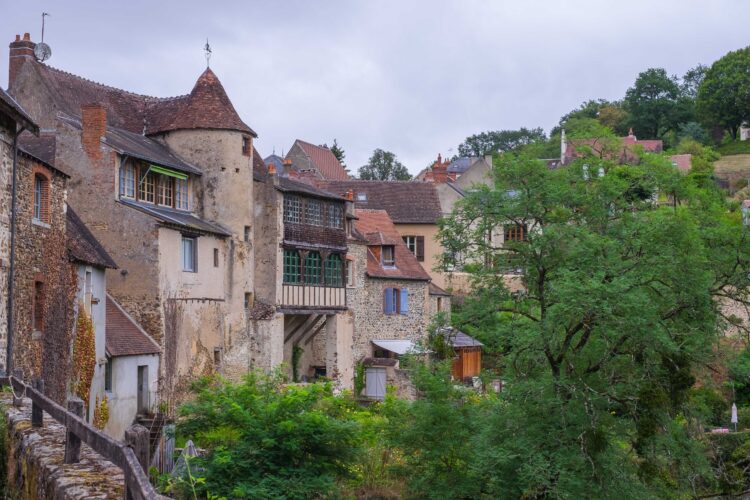

Another gem here, rich with cultural history. I think the landscape and earthy ramshackle buildings and houses provide as stunning a backdrop as you could wish for. Great photos, Richard. Thanks for posting.
I agree! What this part of central France lacks in “spectacle”, it makes up for in rustic charm and history. Good to hear from you!